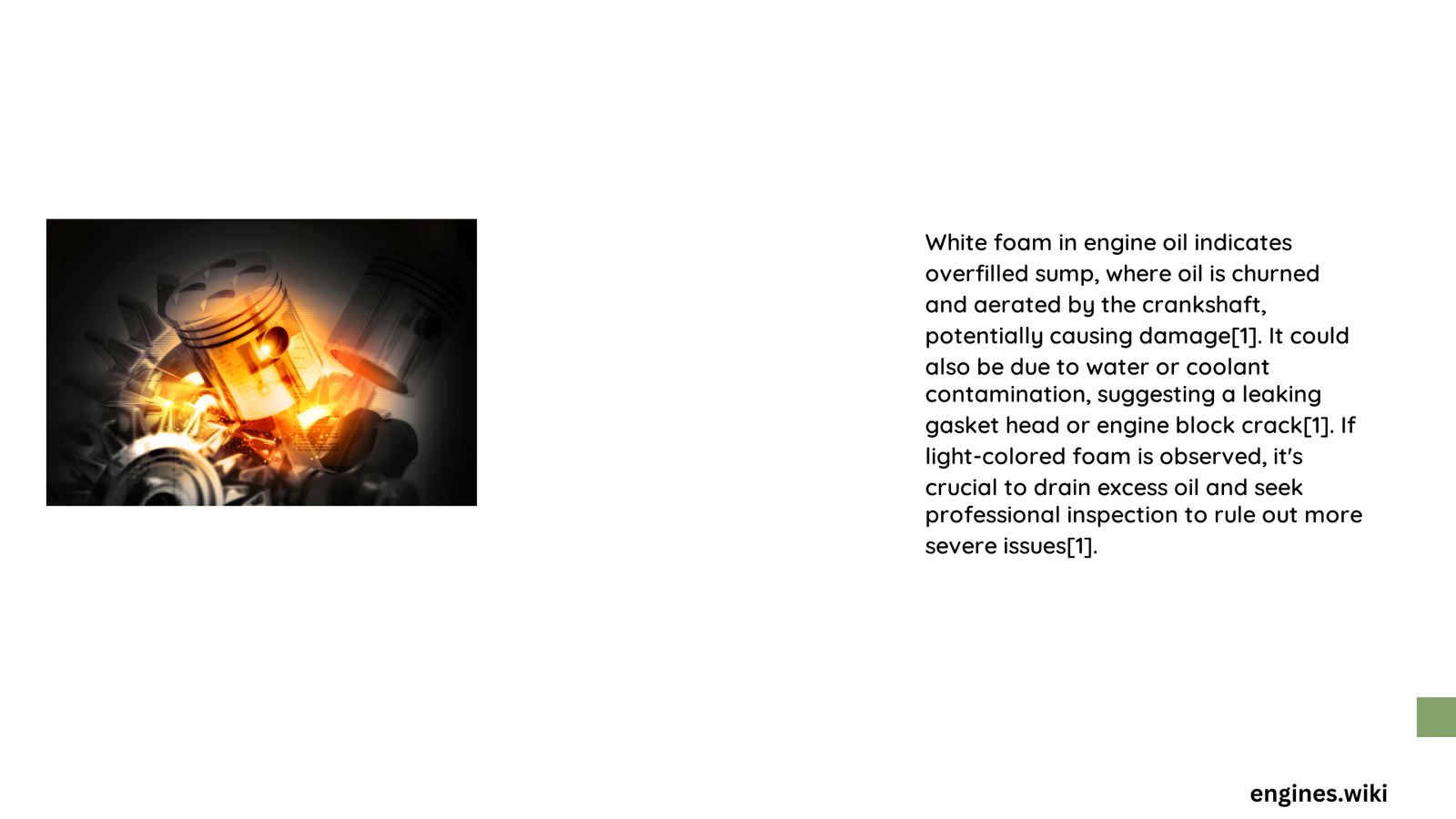Engine oil white foam represents a critical warning sign of potential internal engine problems that can compromise vehicle performance and longevity. When coolant, moisture, or other contaminants infiltrate engine oil, they create a milky, foam-like substance that signals serious mechanical issues requiring immediate professional attention. Understanding the root causes, diagnostic procedures, and targeted solutions is essential for preventing extensive and expensive engine damage.
What Causes Engine Oil White Foam?
Why Does Coolant Leak into Engine Oil?
Coolant leakage represents the primary mechanism for creating white foam in engine oil. This typically occurs through:
- Head Gasket Failure: When the head gasket deteriorates, it allows coolant to mix directly with engine oil
- Cracked Engine Block: Structural damage can create pathways for coolant contamination
- Compromised Cylinder Head: Microscopic cracks can permit fluid intermixing
How Does Moisture Contribute to Oil Contamination?
Moisture enters engine systems through multiple mechanisms:
| Moisture Source | Potential Impact |
|---|---|
| Condensation | Reduces oil effectiveness |
| High Humidity | Penetrates seals and gaskets |
| Improper Washing | Forces water into engine components |
What Are the Diagnostic Indicators?
Visual Inspection Techniques
Mechanics and vehicle owners can identify engine oil white foam through:
- Checking oil cap for milky residue
- Examining dipstick consistency
- Observing oil color and texture
- Monitoring exhaust emissions
How to Resolve Engine Oil White Foam?
Recommended Repair Strategies
- Professional Diagnostic Assessment
- Comprehensive system evaluation
- Pressure testing cooling system
-
Detailed oil analysis
-
Potential Repair Options
- Head gasket replacement
- Engine block repair
- Complete system flush
- Oil and filter replacement
What Are the Potential Consequences?
Ignoring engine oil white foam can lead to:
- Accelerated engine wear
- Reduced lubrication efficiency
- Potential complete engine failure
- Increased repair costs
How Much Will Repairs Cost?
Repair expenses vary significantly:
| Repair Type | Estimated Cost Range |
|---|---|
| Oil Change | $50 – $150 |
| Head Gasket Replacement | $500 – $2,000 |
| Complete Engine Overhaul | $3,000 – $7,000 |
Prevention and Maintenance Tips

Best Practices for Engine Health
- Perform regular oil changes
- Monitor coolant levels
- Address warning signs immediately
- Use high-quality engine oils
- Maintain proper vehicle operating temperatures
When to Seek Professional Help?
Immediate professional consultation is recommended when:
- White foam persists after initial inspection
- Performance issues accompany oil contamination
- Unusual engine noises or overheating occur
Conclusion
Engine oil white foam demands prompt, systematic investigation. By understanding its causes, implementing rigorous diagnostic procedures, and executing targeted repairs, vehicle owners can mitigate potential long-term damage and maintain optimal engine performance.
Technical Expertise Insights
Vehicle engines represent complex mechanical systems where multiple variables interact. White foam formation signals a critical breakdown in these intricate interactions, requiring nuanced diagnostic approaches and precise remediation strategies.
Reference:
– Universal Technical Institute – Milky Oil Diagnostics
– Machinery Lubrication Technical Guide
– Automotive Repair Network
